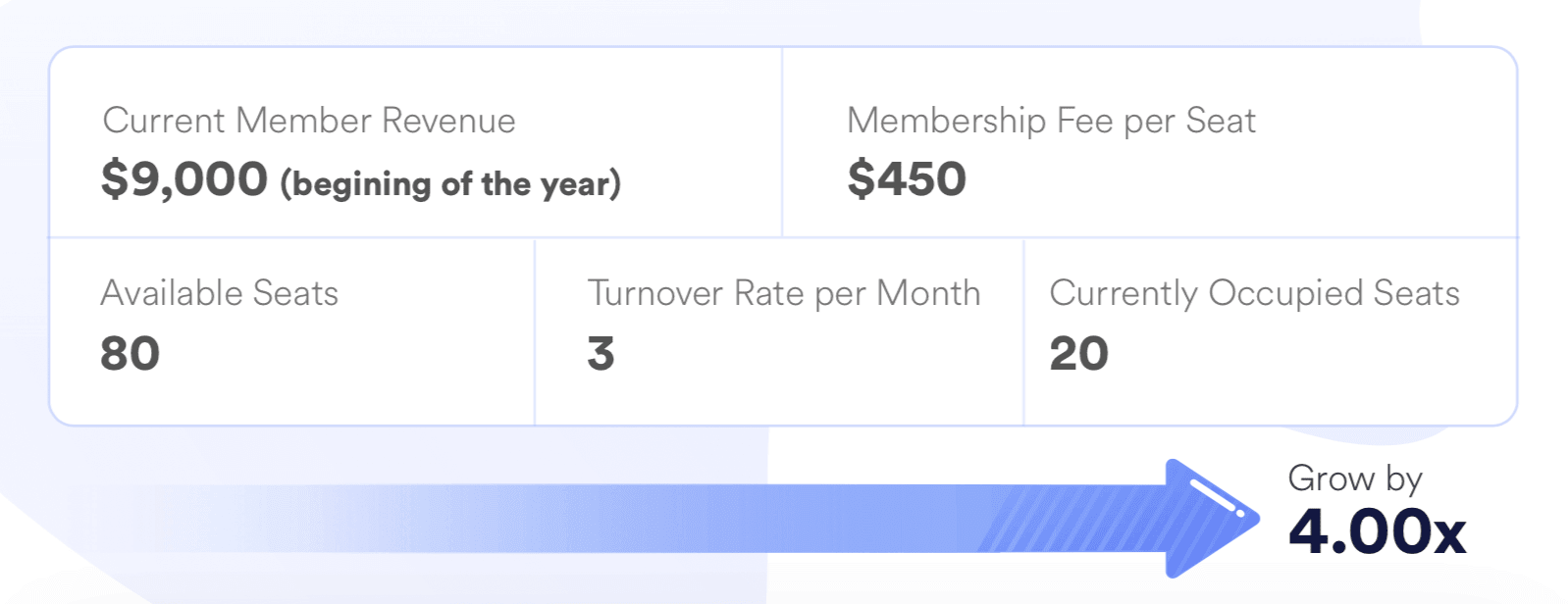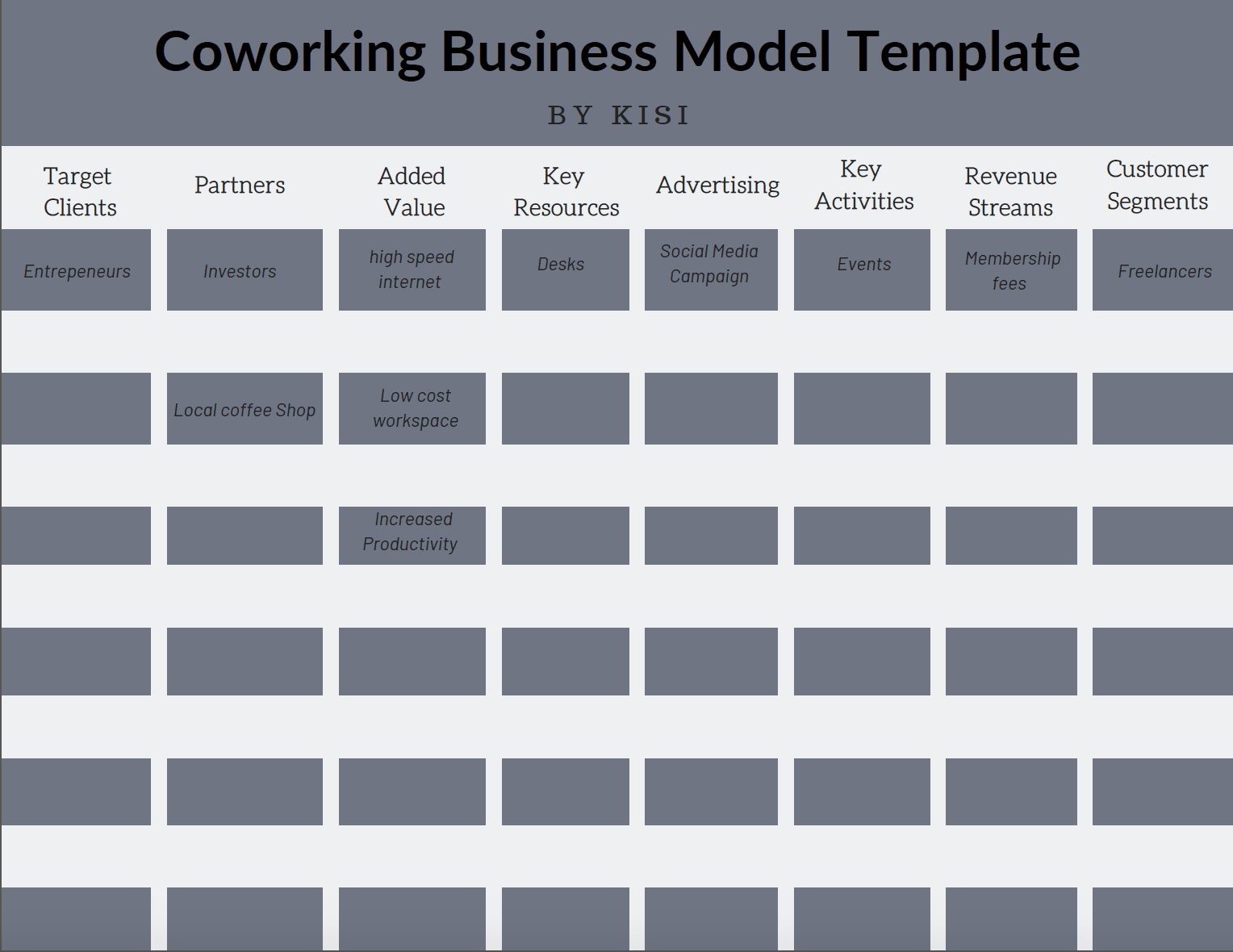
Largest Coworking Companies


The coworking industry is becoming a lucrative worldwide phenomenon, and now is the perfect time to break into the business. And as COVID-19 induced lockdowns and social distancing hopefully become a thing of the past, remote workers will be looking to find ways to connect with like-minded individuals now more than ever. A coworking space is a perfect place to do that!
Below, we've put together a step-by-step checklist to help you envision, assemble, and scale your own unique space. Whether you're brand new to the industry or you already know the ropes, you can use these tips to improve efficiency, define your brand and strengthen your space's community.
We offer a comprehensive guide to operating a coworking space. Download it free here.

Why do you want to open the new space? To make a living? To cross-finance your own startup? To create a national coworking chain? To help your local community?
All are valid answers, but this important first step will help define your entire strategy. You will have to adapt your strategy over time, but your vision should stay intact to make sure your brand is consistent and your members feel valued. Take WeWork for example. Their initial vision — to create spaces for people to come together and innovate — still hasn't changed, even as their business has scaled up.
A look into the future of Coworking Spaces
The co-working market is about to be disrupted. Let's see how

There needs to be a niche for your new coworking business, and thankfully there are plenty of options available. Maybe your area has a high demand for coworking spaces beyond coffee shops and libraries. Maybe the existing spaces in your area are too focused on one type of worker. On the other hand, maybe the other spaces around you are too broadly focused.
You're now in the business of problem-solving, so starting with a focus and expanding from there should be your main goal. For example, Google started out as a simple search engine that used links to determine the importance of individual pages on the internet. Today, they still dominate their niche, but they also offer dozens of services on top of that: Think products and services include mail, calendars, maps, and even phones. To create something bigger, you need to begin with one small thing. Start by analyzing your competitors and conducting a competitive analysis.

Envision your target market's dream coworking environment. Is your space a premium facility for companies or an affordable solution for freelancers? Is your primary audience big business or small teams? Will your facility integrate with your city's business environment through events and partnerships, or will it be an independent space open to anyone?
Answering these questions will help you more easily plan out your membership pricing, amenities, marketing, and location. Being generic doesn’t cut it in the coworking market. Think deeply about how to stand out against the rest and add value to your new space.

This is the tough work that will help you the most in the long run. If your space is fully leased, plan out the number of desks you can offer and monetize. Shoot for using 30 to 40 percent of your total space as desk space. Then, use this figure to calculate how much revenue your space can generate, including comparing the number of hot desks against the number of permanent desks.
Start to formulate a financial plan for your vision. Use our very own free financial ramp-up calculator to get started. The next step is to think about goals further down the line. When will you break even? How much revenue will you generate? How much turnover do you expect? Which amenities and cosmetic choices can you afford?
Now think about the investment you'll need. This includes set up costs, like furniture and internet service; opening costs, like a launch event; and ongoing operations, like maintenance and salaries. There are more costs than you might initially imagine, so research more with coworking guru Alex Hillman's online guide.
Additionally, you should define your value proposition, cost structure, revenue streams, customer segments, key channels, and marketing strategy. You'll need to know these answers inside and out.


Every great business starts with a great team. Consider every side of the plan: a technology expert, an operations manager, and a marketing person are essential, whether you hire them, do those jobs yourself, or outsource to freelancers.
Similarly, you’ll need to look into real estate partners, investors, and other day-to-day employees to round out your core group. A solid team will increase your space's value and pave the way for future growth.
Do you offer lots of space for large teams to rent out, or individual desks to pay for by the hour? Do you offer bare-bones facilities like wifi and a seat at a desk, or cold brew on tap and gym access? You should always aim to offer the work necessities that aren’t available in free spaces like coffee shops: printers, reliable high-speed internet, writing utensils, scanners, and other office supplies. You may want to cater to a specific industry, like offering a space where entrepreneurs can network and bounce ideas off of each other. Are you geared towards providing networking opportunities, or a quiet space for optimal productivity? Or do you cater to bigger clients who want more private meeting spaces or long-term rentals? The answers to all of these questions will begin to define how you sell your space.
Are you catering to individuals, businesses, or both? How will you accommodate those who will stop in sporadically versus members who need a steady 9-5 workspace? Will you lease specific desks and offices or just grant people entry as needed? Are there entire floors that companies can rent out, or private meeting spaces for remote teams? Or maybe you don’t exist in a physical place but are more of a club? These parameters will help you think about what type of space you should occupy.
If you’re offering a space primarily for people to meet outside of the usual 9-5, maybe you operate out of a building that is in use only outside of normal business hours, like a restaurant or church. If you’re catering more to the 9-5 crowd, think about how you can utilize your space outside of business hours. Perhaps you’ll host nighttime events like book readings or networking cocktail hours. Maybe you’ll cater to parents by offering childcare or irregular hours.
Most revenue will come from membership fees, but those can take several forms. You can have members pay monthly or annually, or charge hourly for the use of workspace. You can offer both hot desks, which can be rented out for specific times, and dedicated desks, where a member can leave their things and return at their leisure. A mix of both will ensure you’re filled to maximum capacity. Also consider offering corporate memberships, which can be a great way to get tons of people in the door and allow companies to extend perks to remote teams.
You can also bring in revenue through amenities like a cafe, and build different levels of membership based on these smaller perks. For example, a higher-tier member might get unlimited coffee, free guests, or free access to events.
Another popular revenue stream for coworking space is something called a “virtual office,” in which startups or remote teams pay for a business address where they can send and receive packages, even while working from a different place, like their homes.
A good marketing strategy is key to getting your coworking space off the ground. It’s also highly connected with who your audience is. You may run advertisements on local news or in niche magazines that cater to your audience. You should definitely have an attractive website and a strong social media presence. Many places find success in offering perks to existing members for referring friends.
Try and get creative! Can you work with influencers that your audience might follow? Should you have a booth at industry fairs, or offer freebies to those passing by at a local farmers market or on a busy street?
To get off the ground, many coworking spaces rely on investors. They provide an initial revenue stream and source of capital, plus they provide a networking tool that can be sold to members. If your coworking space hosts a number of entrepreneurs or start-ups, you may want to consider offering to connect them with your investor for a small fee.
Think about smaller-scale partnerships as well, such as different local businesses and entrepreneurs you can collaborate with. Perhaps a local coffee shop would be interested in opening a cafe in your space, or a local restaurant could offer customers special discounts. You could offer members discounts at a nearby gym, or host instructors for fitness classes right in your coworking space.
If you plan on hosting events, begin to compile a shortlist of people who would make a good fit. Are there local entrepreneurs who could give an inspiring talk, or authors who might draw a crowd? Perhaps artists would be interested in having their work on display, or a local library could sponsor a small lending library in your space.
There are tons of helpful coworking business model canvases out there that are helpful to estimate your startup costs, brainstorm partnerships, cater towards your target audience, and build your business. You can save this checklist, as well, to help you start planning your space.
Target Audience: Who is your dream client? Who do you wish to attract?
Partners: Will you be looking for investors? Who will be your internet service provider? Will you partner with local businesses, or bring in local experts for events?
Added Value: What’s your selling point? A quiet space for remote workers to use instead of a home office? Networking opportunities? Speakers and events?
Key Resources: What do you need to be successful? An entire building or just an open floor? Wifi? Cold brew? Fax machines?
Advertising: How will you spread the word? Through local businesses, social media, billboards, or word of mouth?
Key Activities: What will your space be used for? Workspace for startups? Collaboration for entrepreneurs? Events open to the whole community?
Revenue Streams: Will membership fees be fixed or will there be different plans? Will you recruit investors? How many hot desks versus conference rooms? Will you charge a fee for events?
Customer Segments: What different customers do you hope to attract? Freelancers? Remote workers? Entire companies?
Download this Coworking Space Business Model Canvas today and start planning!

Remember: This is a broad overview. While these are some of the main questions you'll need to address when shaping your business plan, there will be plenty of other things to evaluate more in-depth. We've collected a more extensive overview of how to launch and run a coworking space in 2021 with our updated guide, which you can download for free.
And get excited! Coworking is showing signs of massive growth, and this is your chance to improve the world of business while setting yourself up for success.
Save your community manager 41 hours each week—learn how The Yard did it with cloud-based access control.
Read the Case StudyCoworking Space Management Guide
A comprehensive guide to help you manage your coworking space.
Free access to our best guides, industry insights and more.
